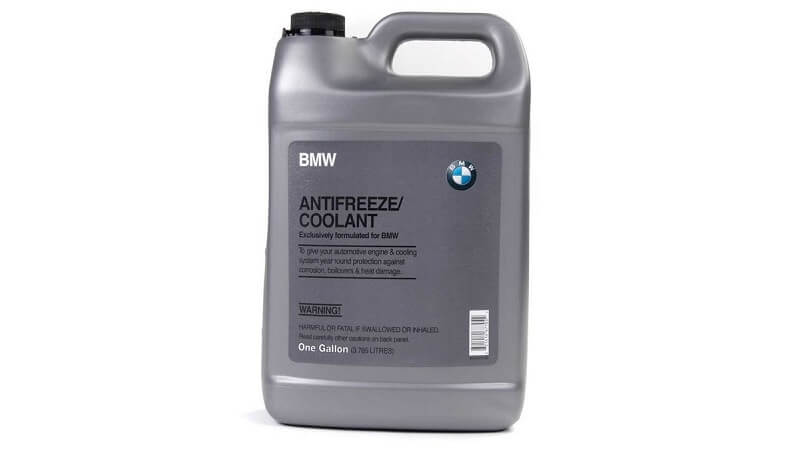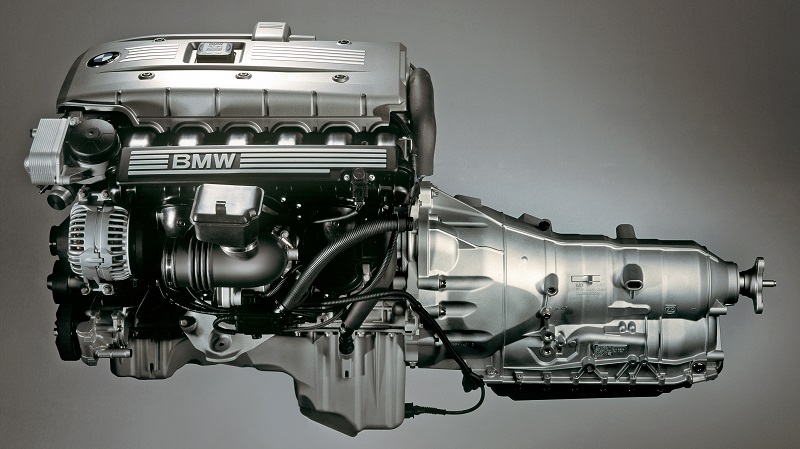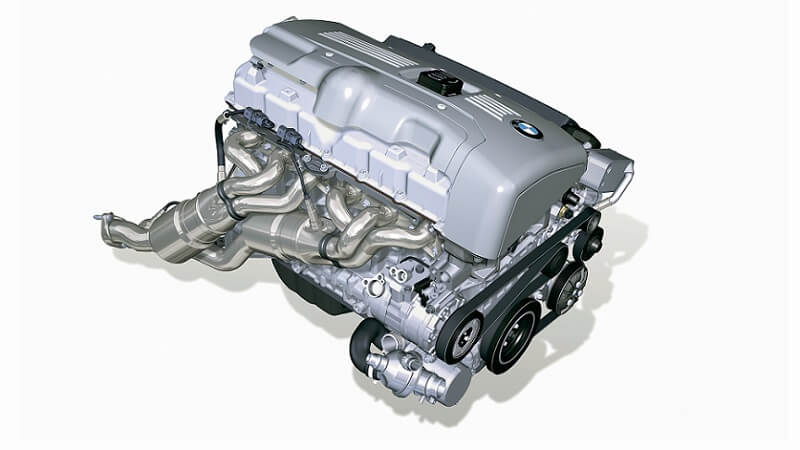Ever since its inception, car enthusiasts around the world have awaited each new generation of the BMW 3-Series with great anticipation. The model that really put this series on the map was the BMW E30. It wasn’t just successful, but it also defined what people could come to expect from BMW’s entry-level offering. Its successor was the BMW E36 and while it enjoyed sales success, it didn’t have quite the same impact the E30 did.
After all, the E30 had left massive shoes to be filled. Over time, people grew open to the idea of a more sophisticated 3-series, which would later affect the success of the E46 — the successor to the E36. That being said, the E36 has maintained a steady level of popularity.
Lately, the demand for it is on the rise. And since these cars aren’t getting any younger, that only means it will be harder to find a clean E36 as time goes by. To help you with that task, we’ve put together a complete buyers’ guide for the BMW E36. Let’s get to it!

BMW E36 – More Value
One of the most notable changes and one that can even be seen on the latest 3-Series is the focus on luxury that the E36 introduced. The BMW E36 is the third-generation 3-Series, but it was the first to bring significant luxury advancements. Many features that were optional on the previous-gen E30 were available as standard on the BMW E36. It also came with a multi-link rear suspension, which was a big step-up.
The E36 also had a completely different silhouette with its long body but shared its boxy design elements with its predecessor. Other styling elements that gave it its unique appearance were the wide rectangular headlights and square kidney grilles. The E36 wasn’t just longer, it was also bigger in every single way — all while feeling much more refined.
That’s not all the BMW E36 brought to the table, it was also the first 3-Series to come with a six-speed manual transmission (first available in the 1996 BMW M3), a five-speed automatic transmission, and a 4-cylinder diesel engine. On the flip side, it was also a generation that missed out on all-wheel-drive, which its predecessor (BMW E30) and successor (BMW E46) had.
The E36 Chassis Through The Years

While BMW began working on the E36 quite early on, in 1981 to be specific, it only made its debut around 9 years later in 1990. Despite being a replacement for the E30 in most markets, the two cars were sold simultaneously in certain countries. The BMW E36 was on sale for a decade until it was phased out in 2000.
Unlike BMW’s more modern offerings, each body style of the E36 used the same designation. Each of these body styles had trim levels and came in many different engine and gearbox configurations, which we’ll touch upon later.
Body Styles
While the E30 was available in four body styles, the BMW E36 had six body style options internationally. Sadly, North America missed out on two of these body styles as we’ll discuss below.
4-Door Sedan
The 4-door sedan body style was one of the first to arrive, and it was around for a while. BMW sold the car in this format from 1990 to 1998 in international markets, while it was on sale in North America from 1992-1998. In its life cycle here, it was available in three configurations -— 318i, 325i, and the top-spec 328i.
2-Door Coupé

The coupé version of the BMW E36, meanwhile, was the body style that sold for the longest period (1990-1999) in international markets. This held true even in the case of the North American market where it was available from 1992 to 1999. The BMW E36 coupé was sold in a total of four configurations — 318is, 323is, 325is, and 328is.
2-Door Cabriolet
Another version of the BMW E36 is the popular 2-door convertible or cabriolet. As its name suggests, this was a convertible version of the coupé. While this body style had a total lifespan of 7 years, it was only available in North America from 1994 to 1999. Like the coupé body style, this version of the E36 was available in four configurations — 318i, 323i, 325i, and 328i.
3-Door Compact
For the time in the 3-series history, BMW introduced a hatchback version of the E36 called the Compact. While this car was shorter in length than the other body styles, it had the same wheelbase. However, it missed out on the multi-link suspension found on the other body styles and used a semi-trailing arm design similar to its predecessor at the rear.
The E36 Compact was on sale from 1994 to 2000 in the European market and proved to be quite popular there, but that wasn’t the case stateside. BMW launched the compact in 1995 and was forced to stop sales by 1999 due to the lack of demand. It was only available as 318ti.
5-Door Touring
If you’re well-versed with European cars, you’ll know that North America always misses out on the cool wagons sold internationally. One such wagon or Touring as BMW likes to call it was based on the E36 and produced from 1994 to 1999. If you really want one, thanks to the Department of Transportation’s 25-year rule, it can be imported into the States. The BMW E36 Touring was available in four gasoline configurations – 318i, 320i, 323i, 328i – and two diesel options – 318tds and 325tds.
4-Door Convertible (Baur TC4)
Another body style that can be considered to be the rarest of them all is the 4-door convertible version built by Baur (a coachbuilder in Stuttgart, Germany). This unique version of the BMW E36 was sold alongside the company’s own cabriolet body style. What separated this one though was that it was based on the E36 sedan and featured fixed door frames. It is said that only 310 examples of the BMW E36 TC4 were ever built.
The BMW E36 sedan, coupé, and cabriolet were also available as M3 models. More on them later.
Engines Available in North America

It’s not just body styles that the E36 had a variety of, there were also quite a few engine options. And while many made it to the states, we’ve missed out on quite a few including the torquey diesel options. Here’s the list of engines and their specifications:
- 318i, 318is (1992-1995) – Powered by the M42B18 4-cylinder engine producing 138 hp at 6,000 rpm and 129 lb-ft at 4,500 rpm
- 318i, 318is, 318ti (1996-1998) – Powered by the M44B19 4-cylinder engine producing 138 hp at 6,000 rpm and 133 lb-ft at 4,300 rpm
- 320i (1991-1993) – Powered by the M50B20 6-cylinder engine producing 148 hp at 5,900 rpm and 140 lb⋅ft at 4,700 rpm
- 320i (1993-1998) – Powered by the M52B20 6-cylinder engine producing 148 hp at 5,900 rpm and 140 lb⋅ft) at 4,200 rpm
- 323is (1995-1998) – Powered by the M52B25 6-cylinder engine producing 168 hp at 5,500 rpm and 181 lb-ft at 3,950 rpm
- 325i, 325is (1991-1992) – Powered by the M50B25 6-cylinder engine producing 189 hp at 5,900 rpm and 181 lb⋅ft at 4,700 rpm
- 325i, 325is (1993-1995) – Powered by the M50B25TU 6-cylinder engine producing 189 hp at 5,900 rpm and 181 lb⋅ft at 4,200 rpm
- 328i (1995-1998) – Powered by the M52B28 6-cylinder engine producing190 hp at 5,500 rpm and 207 lb⋅ft at 3,950 rpm
The North American BMW E36 did get a wide variety of gasoline engines and the choice of manual or automatic transmissions on most of them. However, one gasoline option that didn’t make its way stateside was the entry-level M40B16 found in the 316i trim. Every trim level of the BMW E36 was only available with the rear-wheel-drive configuration.
BMW E36 Facelift
When car companies facelift their cars, they usually make notable changes that help distinguish the updated version from the previous one. However, that wasn’t the case with the BMW E36 as it has had one of the most subtle facelifts out there.
Early cars had a gray finish on the lower half of the bumpers and running boards which was updated to be color matched as part of the facelift. Six-cylinder engines adopted variable valve timing that was claimed to boost low-end response and increase fuel economy. The facelift also increased the width of the wheels that could fit wider tires.
Another aspect that witnessed improvement during the 1995 facelift was the interior. Both fit and finish were made better as the early were lacking in that regard. The steering wheel design was also updated.
BMW also introduced a simplified wiring harness that used plug-in modules on the facelifted E36. A third brake light was also part of this update. The facelift from 1997 brought in what can be considered to be the biggest styling-related changes. They came in the form of an updated grille and side markers. All BMW E36 models had traction control in ’97 and the 1998 update included side airbags as standard.
Optional Packages

A common theme you’ll notice among most BMWs is the availability of multiple optional add-ons that usually came bundled up in various packages. These packages included both comfort and performance-related tweaks and gave the car quite a unique note.
Sports Package
The US sports package included lowered suspension, beefier sway bars, sport wheels, and sport seats. The tires on the Sports Package were also wider than the standard fitment.
Premium Package
The premium package, meanwhile, included leather seats, an electric sunroof, a front armrest, remote entry, and a security system. While these options make up the premium package, it is important to note that they could be optioned individually as well.
California Package
The 318ti or the BMW E36 Compact was available with a California package. This package added a full-length fabric sunroof to the hatchback. It was called the California package in 1996 and went on to become an option in the years following it.
BMW E36 M3

While the BMW E36 models sold across the world were quite similar when it came to equipment and performance that wasn’t the case when it came to the sporty M3 trim level. The M3 arrived much later, in 1995 to be precise. The coupé body style was around for the longest and as a result, it’s also the most common with a 4-year run from ‘95 to ‘99. The sedan, on the other hand, was only available in 1997 and 1998, while the convertible was on sale in 1998 and 1999.
The US-spec BMW E36 M3 also got a less desirable engine than the one available in the rest of the world. The M3 sold domestically came with the S50B30US which produced 240 hp and 225 lb-ft. For reference, the engine in other markets made 286hp and 236 lb-ft. The US M3 also missed out on floating brake rotors, an oil temperature gauge, and more. It is said that these changes were a result of cost-cutting as the US dealers believed the international-spec M3 would be too expensive to sell in high enough numbers.
BMW did increase the capacity of the engine slightly in 1996. Even so, the power figure remained unchanged while torque increased to 236 lb-ft. Engine output aside, the real tragedy of the US M3 was the lack of the optional six-speed manual gearbox its EDM counterpart came with.
Which Engine to Get?
Choosing between the trim levels or engines comes down to what you are looking for from the BMW E36. If you’re after fuel economy, you should get the 4-cylinder 318i, 318is, or 318ti. However, if you’re looking for performance, the 6-cylinder 328i or 328is is the best option for the non-M3 trim levels.
BMW M52 Engine
The M52 engine from BMW includes multiple versions like the M52B20, M52B24, and M52B25. However, it’s the last version – the M52B28 – of this motor that offers the most bang for your buck. This engine was found on other BMWs like the E38 and E39, where it performed admirably as well. In an E36, this motor managed to deliver a 0-62 MPH time of around 7 seconds. While that isn’t lightning fast by modern standards, it’s still fast enough.
The M52B28 was a 2,793 cc (170 cu in) VANOS-equipped 6-cylinder engine that made 190 hp and an impressive 210 lb-ft at 3500 rpm. Interestingly, with a bore and stroke of 84 mm, it had a square set-up. The compression ratio, meanwhile, is 10.2:1. Not only was it the most powerful of the lot (non-M cars), but it also was the newest which makes finding a lower mileage example slightly easier.
The US-spec M52B28 uses a cast-iron engine block instead of an aluminum one. BMW was forced to do this because of the high levels of sulfur in the US gasoline, which has a corrosive effect on Nikasil leading to fast wear. While this made the engine slightly heavier, it didn’t suffer premature bore-liner wear like the aluminum one.
Is BMW E36 Reliable?
All things considered, the BMW E36 is a reliable machine. While it has its fair share of problems, none of them are dealbreakers. Pretty much all of the engines available held up fine given the proper maintenance.
Pre-Purchase Inspection — Known Issues

That being said, let’s take a look at some of the known issues that these cars became known for. We’ve listed them in no particular order.
Cooling Problems
The BMW E36 is infamous for its cooling-related issues. The problems came about because its cooling system consists of many plastic components. These parts are known to wear out and develop cracks once the car crosses the 100,000-mile mark. Common areas for wear include the inlet and outlets from the radiator and the plastic thermostat housing. If left unattended, the engine can develop coolant leaks which can cause engine issues owing to overheating. Interestingly enough. These same issues were inherited by the E46 3-series later on.
Water Pump Failure at 100,000-miles
Just like the other cooling components, the water pump on the BMW E36 makes use of a plastic impeller. This impeller has the important function of circulating coolant through the engine. Sadly, this component is known to crack, and that drastically reduces the cooling capability and causes the engine to overheat.
VANOS Trouble
If the E36 you are looking at is equipped with VANOS, it’s important to check for a rattling sound. It will be audible in the 1.000-3.000 rpm range and sound like “marbles in a tin cup.” The single VANOS system of a US-spec BMW E36 can signal one fault code which is: P1519. This error code suggests that the system is jammed and not functioning as it should. Symptoms of this problem include low power and fuel efficiency along with driveability issues.
Rough Idle
Another issue to watch out for is a rough idle. There are several issues that could be causing this, the first being a simple one — a dirty idle control valve. This issue is easy to resolve as it can be fixed by just cleaning it. Depending on how dirty it is, you might need to replace the idle control valve altogether. The second problem is one that is prevalent in earlier cars. A poorly sealed ECU compartment is prone to flooding under heavy rain causing engine issues.
Oil Burning
It’s not uncommon to come across a BMW E36 that’s burning oil. This is easy to spot as the smell of burning oil is quite peculiar. If you notice this, there’s a decent chance that your engine is leaking oil. One of the main culprits is a worn-out valve cover gasket which can leak oil down the cylinder head. DOHC engines are also known to develop oil leaks that let oil flow into the spark plug wells, which can cause a lot of problems over time.
Interior Woes
The BMW E36 isn’t known to have the best interior quality. In fact, the company had to address many of the issues in 1995. Pre-1995 cars suffer from poor fabric quality, glove box rattles, and dashboard bulging. Some cars also developed rattling sounds from the sunroof and rear parcel shelf.
Weak Suspension
BMW E36 buyers also need to be aware of the suspension-related trouble this car can develop. Rear shock mount failure is a common issue. A quick way to tell if the car you are looking at is facing this issue is from a clunking or metallic noise from the rear over rough patches of road. This generation of the 3-Series also has weak front outer ball joints and rear inner control arm bushes.
Is The BMW E36 Worth Buying In 2022?
Yes, the BMW E36 is most definitely worth buying in 2022 at the right price. It has a lot going for it, beginning with that old-school charm. It’s also supported by a massive aftermarket, so there’s nothing to worry about as far as finding parts goes.
Sure, be vary of its common problems, but know that the majority of them are quite inexpensive and easy to fix. What it comes down to, is finding the right car at the right price. Don’t be afraid to pay a little extra for a clean example as it’ll surely be more rewarding in the long run.




